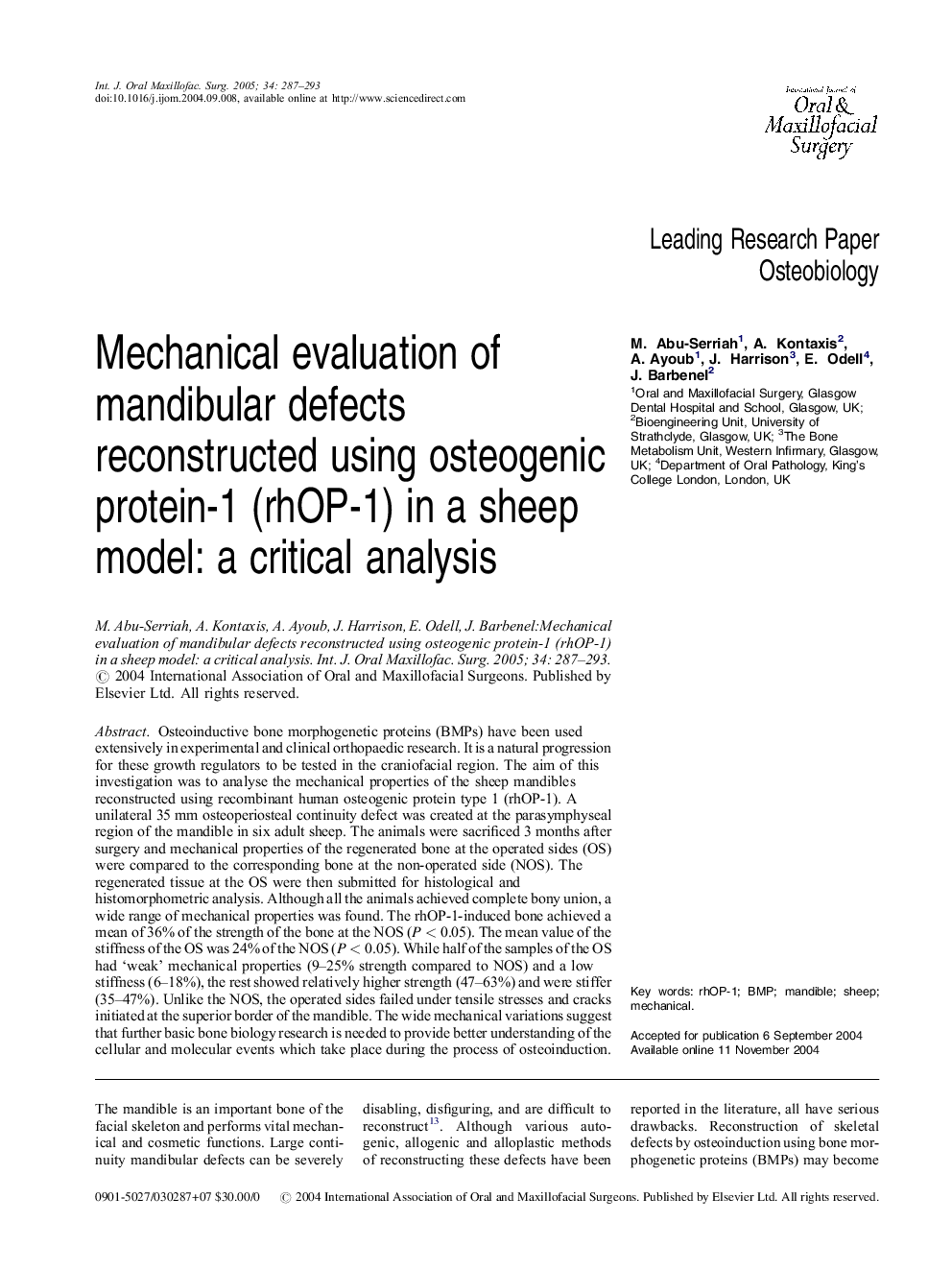| Article ID | Journal | Published Year | Pages | File Type |
|---|---|---|---|---|
| 10001037 | International Journal of Oral and Maxillofacial Surgery | 2005 | 7 Pages |
Abstract
Osteoinductive bone morphogenetic proteins (BMPs) have been used extensively in experimental and clinical orthopaedic research. It is a natural progression for these growth regulators to be tested in the craniofacial region. The aim of this investigation was to analyse the mechanical properties of the sheep mandibles reconstructed using recombinant human osteogenic protein type 1 (rhOP-1). A unilateral 35Â mm osteoperiosteal continuity defect was created at the parasymphyseal region of the mandible in six adult sheep. The animals were sacrificed 3 months after surgery and mechanical properties of the regenerated bone at the operated sides (OS) were compared to the corresponding bone at the non-operated side (NOS). The regenerated tissue at the OS were then submitted for histological and histomorphometric analysis. Although all the animals achieved complete bony union, a wide range of mechanical properties was found. The rhOP-1-induced bone achieved a mean of 36% of the strength of the bone at the NOS (PÂ <Â 0.05). The mean value of the stiffness of the OS was 24% of the NOS (PÂ <Â 0.05). While half of the samples of the OS had 'weak' mechanical properties (9-25% strength compared to NOS) and a low stiffness (6-18%), the rest showed relatively higher strength (47-63%) and were stiffer (35-47%). Unlike the NOS, the operated sides failed under tensile stresses and cracks initiated at the superior border of the mandible. The wide mechanical variations suggest that further basic bone biology research is needed to provide better understanding of the cellular and molecular events which take place during the process of osteoinduction.
Keywords
Related Topics
Health Sciences
Medicine and Dentistry
Dentistry, Oral Surgery and Medicine
Authors
M. Abu-Serriah, A. Kontaxis, A. Ayoub, J. Harrison, E. Odell, J. Barbenel,
